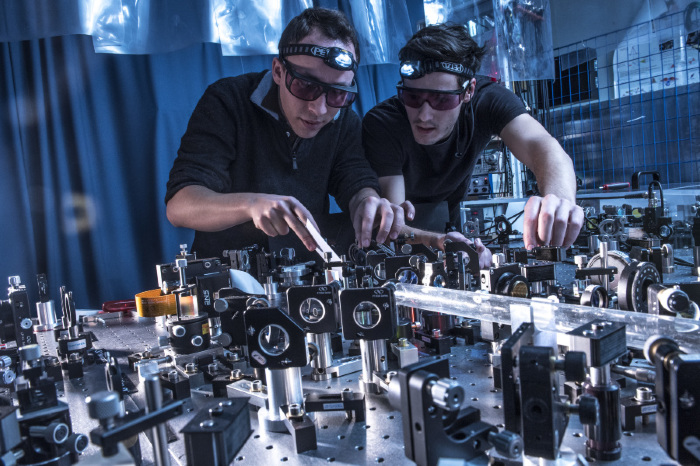Quantum computers require a range of properties. First of all, we want them to be programmable to tackle a wide range of different problems. Furthermore, we also want them to be scalable, which means that we can put fundamental building blocks together to build a machine that can solve complex problems. Finally, we want a quantum computer to be universal. Which means that it can perform a set of basic operations that make any quantum state accessible.
In our group, we use light to develop basic building blocks for such a quantum computer. In particular, we use our quantum frequency comb as a platform for quantum information processing. The different frequencies can be entangled in a controllable way, which makes the platform scalable and programable. However, in this platform it is hard to access the class of quantum states that are known as non-Gaussian states (see textbox for further details), which means that the quantum computer is not universal.
In our recent Nature Physics paper, the research team developed a technique known as “mode-selective photon subtraction”, where one photon is literally taken out of the light beam to create such non-Gaussian states. A crucial element of the experiment is the control of the frequency of the subtracted photon, as we even managed to perform photon subtraction in a superposition of frequencies. Due to this degree of control, we could explore the interplay between the non-Gaussian effects that are induced by removing a photon, and the quantum entanglement that is present in the quantum frequency comb. This allowed us to verify a previous theoretical prediction that non-Gaussian features spread out because of the entanglement.
We work in the so-called continuous-variable approach, which means that the quantities which we measure can take any possible real value (even in the quantum regime). In practice, what we measure are the amplitude and the phase of the electric fields that comprise our quantum frequency comb.
When we do not subtract a photon, the statistics of these measurements will always lead to a normal (Gaussian) probability distribution. Non-Gaussian states, on the other hand, are much wilder and can have more exotic measurement statistics form the phase and the amplitude of the field. The measurement can be so exotic, that we can no longer represent the probability of measuring a certain amplitude and a certain phase by one joint probability distribution. We can follow a mathematical procedure to construct such a joint probability distribution, but the results will be quite strange, and we will find what seem to be negative probabilities. This resulting function that describes the joint measurement statistics of the phase and amplitude of the light field is known as the Wigner function.
The fact that it reaches negative values (and thus is not a probability distribution) reflects the fact that the amplitude and the phase of the field are complementary observables. Their measurements are constrained by Heisenberg’s uncertainty relation; hence they cannot be measured precisely at the same time. Therefore, it is logical that weird things can happen when we try to deduce the joint measurement statistics! These negative values of the Wigner function are a real hallmark of quantum physics. We need them to violate Bell inequalities and to achieve them construct universal quantum computers. We showed that by photon subtraction we can induce these properties in a large system.

